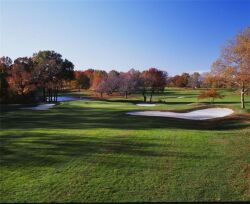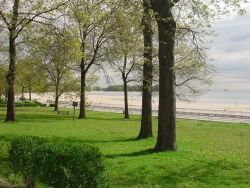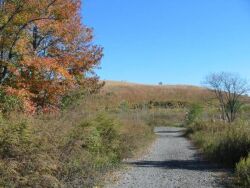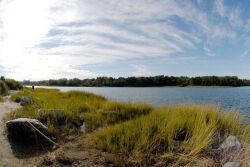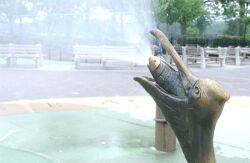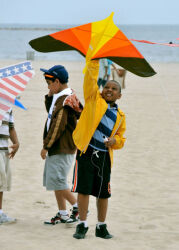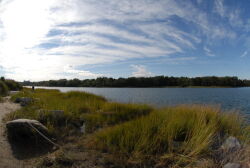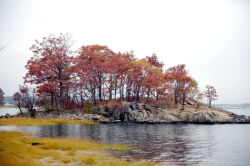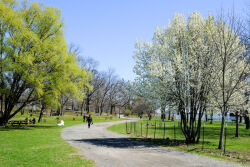Pelham Bay Park
Pelham Bay Park - Invasive Phragmites
Around twenty thousand years ago, New York was buried beneath massive glaciers. When the ice receded, it left behind the characteristic sketch of what would become Van Cortlandt Park—steep ridges, smooth hillsides, and open flats. Thousands of years later, in 1646, Dutchman Adriaen Van Der Donck (1620-1655) became the first single owner of this property. The land then passed through several families, each gradually developing it into viable farmland and a working plantation. The Van Cortlandt name was first associated with the tract of land in 1694, when Jacobus Van Cortlandt bought the property. His son, Frederick Van Cortlandt, whose family occupied the land until the 1880s, built the Van Cortlandt Mansion in 1748. In 1888, the City of New York acquired the land for park development. Today, the park is home to a variety of plant and animal inhabitants, of which one plant species is of note due to its invasive nature.
As one of the 20 most invasive plants in New York State, phragmites (Phragmites australis), also known as the common reed or “phrag,” have become a ubiquitous part of New York City’s landscape. Clusters of phragmites can be found fringing the ponds and marshes of many city parks such as this one. Great Kills Park in Staten Island, Idlewild Park and Alley Pond Park in Queens, Van Cortlandt Park in the Bronx, and Marine Park in Brooklyn have large concentrations of phrag. The plants are capable of living anywhere that stagnant or slow moving fresh water is found, including vacant lots, ditches, and along roadways, as well as in marshes and wetlands. Phragmites will take over any area where the soil has been disturbed. This aggressive reed outcompetes any pre-existing vegetation, leading to thick, choking stands that can grow to 15 feet in height. The name phragmites comes from phragma, Greek for ‘fence’ or ‘barrier.’ Phragmites grows so vigorously that it even reaches through paved streets.
Phragmites are considered to be a “cosmopolitan” species – one that grows throughout the world – but in recent years it has become particularly invasive, taking over other species’ habitats. It is not clear why phragmites suddenly began spreading so rapidly. Some ecologists believe that a new strain, genetically different from the native American species, was recently introduced from Europe. Anthropogenic, or human-caused, changes to soils also may have promoted phragmites growth. Increased nutrients and pollutants from fertilizers, sewage discharge, and urban stormwater runoff give phragmites a competitive advantage over other plants. Whatever the reason for phragmites’ spread, the population of the reed in the Northeast has skyrocketed in recent years, to the detriment of other plant and animal species.
Young phragmites is good for livestock feed, but local wildlife does not generally consume it. Occasionally, waterfowl may eat its seeds, muskrats its stems and rhizomes; but overall, phragmites provides poorer nutrition than the plant species it replaces. Although the thick strands provide good thermal cover for molting waterfowl, most birds do not nest where there is an abundance of phragmites, leading to dwindling bird populations. Phragmites adjacent to a salt marsh usually grows above the daily tides, limiting their use as a fish habitat to the rare spring tide that brings them to high elevations. In coastal areas, introducing tidal flow and planting salt marsh cordgrass (Spartina alterniflora), which is very salt-tolerant, can restrict phragmites growth. Other control efforts include herbicide use, which is effective but also leads to eradication of non-target species; cutting, which induces the same problem; and summer burning, which can actually encourage stronger growth by adding nutrients to the soil.
The invasive tendencies of phragmites are not completely negative. Thanks to their aggressive growth patterns, phragmites is able to remove enormous quantities of contaminants from degraded soils and wetlands. In England, where the plant is used to make thatched roofs, mats, and other weavings, phragmites is endangered, and ecologists there are exploring restoration methods.
Check out your park's Vital Signs
Clean & Safe
Green & Resilient
Empowered & Engaged Users
Share your feedback or learn more about how this park is part of a
Vital Park System

Know Before You Go

Contacts
Pelham Bay Park Administrator's Office: (718) 430-1891
Bartow-Pell Mansion Museum: (718) 885-1461
Park Enforcement Patrol: (718) 430-1815
Pelham Bay & Split Rock Golf Course: (718) 885-1258
Turtle Cove Driving Range: (718) 885-2646
Orchard Beach Nature Center: (718) 885-3466
Urban Park Rangers: (718) 548-0912
Events and General Parks Information: 311
Bronx Equestrian Center: (718) 885-0551
Friends of Pelham Bay Park: (718) 430-4685
Bronx Recreation: General Information: (718) 430-1825
Bronx Recreation: Special Events Permits: (718) 430-1848
Bronx Recreation: Sports Permits: (718) 430-1840
Bronx Recreation: Tennis Permits: (718) 430-1848

